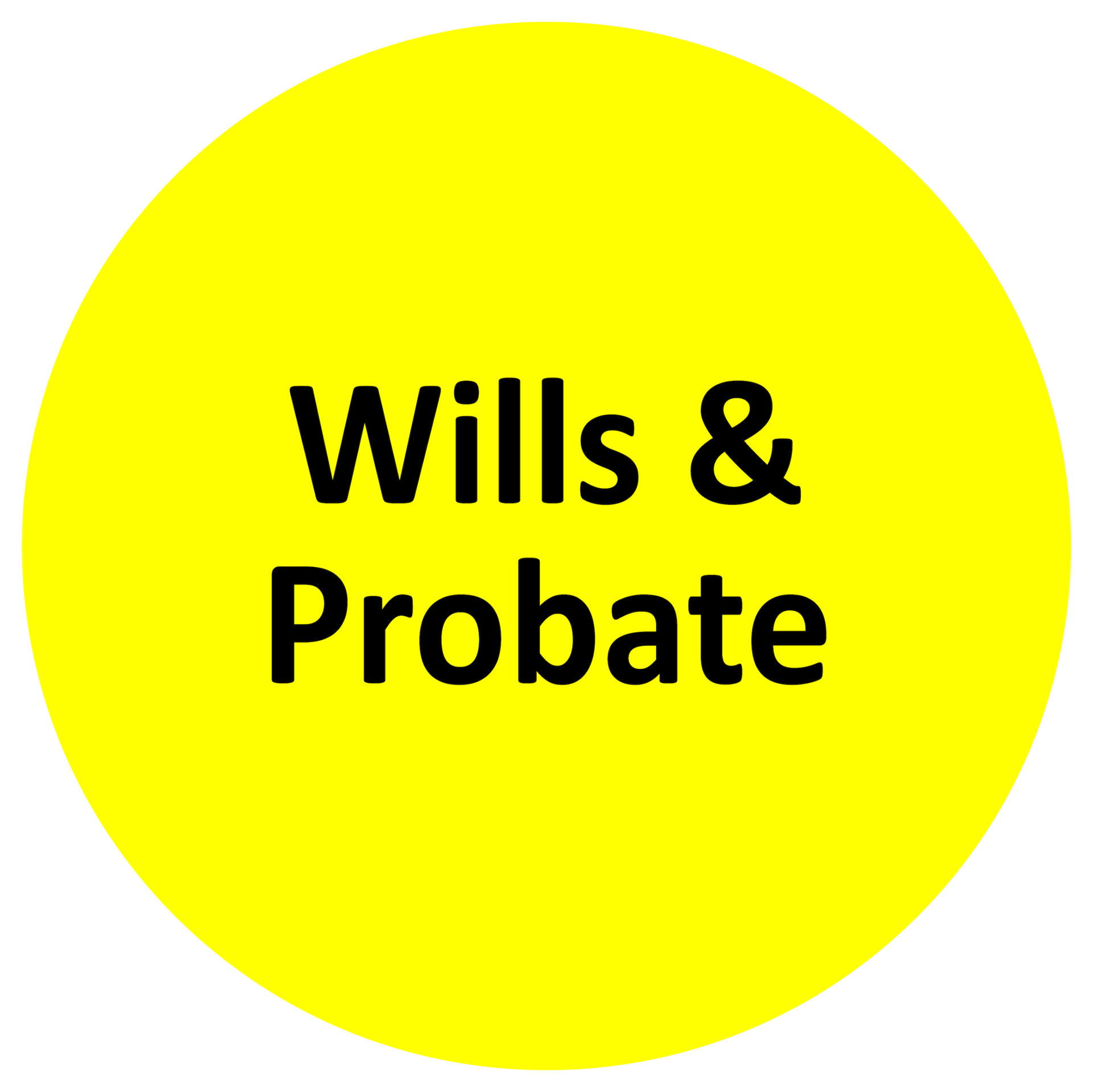MG Legal, Leading Conveyancing Solicitors. The team that put you first. Contact us to speak to a solicitor today: 01772 783314 or email at: property@mglegal.co.uk

CQS Accredited Solicitors

SRA Regulated Solicitors

Local Knowledge

Decades of Experience

Lender Panel Solicitors
Sell quicker with MG Legal.
It can be hard to know where to start when it comes to selling a property and working with a conveyancing solicitor, as there can be many different factors involved and things to consider.
Here at MG Legal, our expert team of local Conveyancing Solicitors deal with residential sales on a daily basis, for clients across England and Wales. Our Conveyancing Solicitors are on hand to guide you through the process, making the whole property selling process as stress-free and as quick as possible.
Our conveyancing solicitors' step-by-step guide when selling your house:

Instruct our conveyancing solicitors
As soon as you have accepted an offer on your house, your conveyancing solicitor will get to work on your conveyancing, and issue our client care to you, outlining our services and fees.

We send the contract pack to the buyer's solicitor
Your Conveyancing Solicitor will then issue the draft Contract Pack, inclusive of all necessary information about the property, for the buyer’s solicitor to carry out their necessary checks, searches, and raise any enquiries.

Exchange of Contracts takes place & completion agreed
Once all enquiries have been dealt with, Contracts will be signed in order for the legally binding Exchange of Contracts to take place. This makes the transaction legal, for the proposed Completion Date.

Completion day and keys given to the buyer
Legal Completion then takes place on the agreed completion date. This is the day that the keys shall be handed to the buyer, and the sale proceeds released to you, making the transaction Complete.
Stages of selling a residential property:

After the estate agent has helped find a buyer for your property and you have accepted their offer, the estate agent will then write to your conveyancing solicitor telling them of the details of the upcoming sale. This is known as the memorandum of sale.
Your conveyancing solicitor will then write to you, outlining their terms of business and client care documentation, and confirming their instructions and fees in the matter.
At this point, you will be asked to complete the protocol forms, which form part of the Contract pack, which is then passed on to the buyer via the conveyancing solicitors.
These include the Property Information Form, used to advise the buyer of any important information about the property, such as if you have had new windows fitted, whether the property has been extended, or if the property has previously flooded.
You will also fill in a form confirming what items you will leave at the property upon Completion, known as the Fittings and Contents Form. Should you wish to offer any items in the property to the buyer, at an additional fee, this can also be relayed in this form.

Your conveyancing solicitor then sends the contract pack to the buyer’s solicitor, for their review. This includes the draft Contract, the property forms, a copy of any relevant title deeds, and any relevant property documents.
On receipt of this documentation, the buyer’s solicitor looks through the Contract pack to ensure there are no discrepancies.

We will then receive the buyer’s enquiries through their solicitor, which can include queries such as:
Whether planning permission and Building Regulations was required or obtained for renovation work or extensions.
Have the gas and/or electrics been tested, and can the compliance certificates be provided?
If a risk of flooding has been revealed on the search results, what flooding has the seller experienced during their ownership of the property?
Is the property connected to the mains water or drains? Have these been built over by, for example, a shed?
With leasehold properties, common questions can include clarifying shared maintenance costs, the length of a lease, and what rights the leaseholder will have.
Upon receipt of the enquiries, your conveyancing solicitor will discuss them with you, and forward your responses to the buyer's solicitor for their review.

When happy, the buyer then signs the contract, in anticipation of Exchange of Contracts. At this stage, as the seller, you would also be asked to sign the relevant documents. It is important to note that the documents do not become legally binding until Contracts have been formally Exchanged.
Dates for Exchange and Completion of the matter can then be agreed. In some cases, these two processes may take place on the same day, which is known as a simultaneous Exchange of Contracts and Completion.
The solicitors can then call each other and formally Exchange Contracts. Once finalised, this then creates a legally binding Contract, meaning that Completion must now take place on the agreed date.

On the day of Completion, once the money arrives with us, we will let you know that Completion has taken place, and that the estate agents may release the keys to the buyer.
Your conveyancing solicitor then handles any remaining financial elements of the property sale, including repaying any mortgage secured over the property, paying the estate agent, deducting the amount required to cover legal fees and incepts any indemnity policies that have been agreed.
The net proceeds are then forwarded to your nominated bank account. The buyer’s solicitor will then register the change of ownership with the Land Registry.

At this point, the transaction is complete. Your conveyancing solicitor will let you know when everything is complete, and will be happy to answer any final questions that you may have about the process, no matter how minor they may seem.
Your designated conveyancing solicitor at MG Legal will ensure that you are entirely happy with the process and outcome at this final stage. To learn more about our conveyancing solicitors, and how they can help with your property sale, get in touch here.
Conveyancing Sales FAQs
The Contract pack is a very important bundle of documentation that your conveyancing solicitors require to carry out essential work as part of the conveyancing process.
The Conveyancing Solicitors acting on behalf of the sellers will initially ask them to complete a number of forms providing information about the property that is necessary to draft the Contract itself, together with providing any relevant documentation relating to the property.
Once the Conveyancing solicitors have all of the documentation required, the Contract pack can be drafted and will include the following:
This is the Contract for sale that is used to Exchange and make the transaction legally binding. This is sent to the buyer’s conveyancing solicitor for their approval, whom may make necessary amendments such as the names of their clients, prior to Exchange, ensuring all terms stipulated within are agreed.
Inclusive of the Property Information Form, which provides your conveyancing solicitors with various details about the property, inclusive of any works that have been carried out, details of any occupiers, disputes, etc. Your conveyancing solicitors also send the Fittings and Contents Form, which confirms which items the seller intends to leave or take from the property upon Completion. If the property is leasehold, a Leasehold Information Form will also be sent, which includes details for the managing agents, maintenance information, service charge details etc.
Your conveyancing solicitors are able to download, from the Land Registry, a copy of all the information the Land Registry hold about the property. This is known as the Official Copy Register and will, for example, detail who the registered proprietors of the property are – to confirm that the sellers have the authority to sell. The Register will also reveal any Charges or Restrictions on the property. The Register is accompanied by a Title Plan which shows the physical boundaries of the property being sold.
Upon obtaining the Official copy Entries, your conveyancing solicitors will be able to see any other documents held by the Land Registry, for example, copy Conveyances. Your conveyancing solicitors will download the same and send these as part of the Contract Pack. Such documents can contain details of any restrictive covenants or rights of way, for example, that provide the buyer's conveyancing solicitors with important information about the property.
Any certificates, guarantees, warranties etc are also sent within the pack as the same will be useful to the buyers. For example, a warranty for the boiler will be of use in the event that if there are any issues, the same can be rectified under the warranty.
The energy Performance Certificate is sent with the pack to provide information of the property’s energy use and typical energy costs.
Your conveyancing solicitors will also ask for any other relevant documentation that may be of use to the transaction. For example, if the property has the benefit of a septic tank, further information will be required here to be sent as part of the Contract Pack.
The memorandum of sale is a document which is provided to all parties in the transaction, and confirms important information that will assist the matter proceeding.
The memorandum of sale can be drafted by an auctioneer, home buying company, or more commonly, an estate agent, and is then sent to both the buyer's and the seller's conveyancing solicitor.
The memorandum of sale includes details of the parties involved in the property sale, including the buyer, the seller and their acting conveyancing solicitors, together with their addresses and contact details.
Most Memorandums of Sale also contain the following information:
Details of the property being dealt with, including the full address and tenure, i.e. freehold or leasehold
The agreed price of the property
Confirmation as to any specific requirements the parties may have in respect of Completion
What fixtures and fittings will be included in the sale
How much of a deposit will be paid for the property
Confirmation as to whether the prospective purchaser will be buying the property cash, or will be securing finance by other means, such as a mortgage
The name/details of the mortgage brokers/advisors involved in the sale
The memorandum is also usually accompanied by the energy performance certificate, as this is legally required in order to sell the property
As you can see, the memorandum of sale can provide important information relating to the transaction and is provided upon commencement, so that the legalities of the transaction can proceed without delay.
Introduced in 2007, the Energy Performance Certificate, also known as the EPC, is something that your Conveyancing Solicitors will be concerned with, whether you are buying or selling a property.
The EPC, essentially, provides for how energy efficient a property is, how energy may be conserved at the property, and includes an average spend amount for the household. The assessment of the same allows the property to be rated from A-G, in terms of how efficient it is. A is, of course, the most efficient, with G being the least. More information on Energy Performance Certificates, and their importance, can be found in our Conveyancing solicitors’ blog below.
For those of us that are more visual, here’s an example of what an EPC Certificate might look like, here.
When selling a property, there is a legal obligation to obtain and supply an EPC to the buyer, as confirmation of the property’s current energy performance rating. An EPC is valid for 10 years, so must be dated within this time when a property is being sold. When buying a property, this would always be requested by your conveyancing solicitor, for your information on the above points.
As explained by our Conveyancing Solicitors in "What is an Energy Performance Certificate?", the EPC provides for important information about the property, in terms of its energy efficiency, however, the importance of the same may differ, household to household.
The current rating of the property may be subject to change, for example, if the certificate is older, the rating could well have changed over time. As the Certificates last for a period of ten years, this should be considered at the point of purchase.
In addition, the rating may be subject to change, dependent on your lifestyle. Whilst the current rating may be very appealing and efficient, the level of usage of facilities at the property by the new owner may also mean the rating could change. Again, this should be considered on a case-by-case basis, in accordance with the anticipated changes, if any, at the property.
The Certificate does, however, provide useful information in terms of efficiency and, if any deficiencies are found, the same may need to be rectified, to help you save money in the future. In addition, such deficiencies may only be set to worsen as time passes, which could maker them more costly to remediate in the future. The moral of the story is to assess the EPC rating individually to your unique circumstances.
One crucial point to remember is that the EPC does not allow assessors to carry out invasive works to form a conclusion on the property rating. When purchasing a property, our Conveyancing Solicitors would always recommend instructing the services of a chartered surveyor to carry out a full structural survey on the property, which would allow for any significant issues with the property to be revealed and rectified, if necessary, before completion.
As you can see, the Certificate is of use, however, question arises out of the significance of this use. Well, for one of MG Legal’s valued clients, this meant that the offer made on the property in question was considerably lower than originally anticipated, due to the rating of the property. This item will be of fluctuating levels of importance, buyer to buyer, however, when acting on your behalf, our conveyancing solicitors would always ensure that such certificate was in existence, and that our clients are satisfied with the same, before proceeding.
When dealing with a property sale, there can be a hundred and one things on your mind, and mountains of paperwork to sift through. This is where the assistance of our Conveyancing solicitors comes in, who are on hand to guide you smoothly through the process. There are, of course, a number of important documents that you will be required to consider within your property sale, one of which being the Fittings and Contents Form.
Also known as the TA10 or the Fixtures and Fittings Form, the Fittings and Contents Form is an important document that your conveyancing solicitor will ask you to complete, when selling a property. This form, essentially, confirms to the prospective purchaser of the property which items you intend to leave at, and take from, your property on Completion. A specimen of the form, and the other TA property forms that the Law Society have prescribed, can be viewed here.
This is an important document that not only forms part of the Contract pack, but also forms part of the Contract for Sale. It is, therefore, important that the responses thereon are accurate.
Contact Us Today:
Or give us a call on 01772 783314

Clear, fixed-fees

Fully-Qualified Conveyancing Solicitors

Tailored Service

Multiple Office Locations

Decades of Experience






